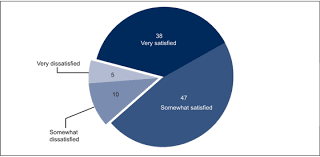Electronic Medical Records Adoption
Electronic Medical Records Adoption – By 2009, the adoption rate of electronic medical records in American medicine was at 48 percent.(1)Not only is there a strong financial interest in adopting electronic medical records, but there is also a strong academic interest in EMR which is evidenced by the appointment of new regulatory guidelines. The economic downturn has also improved physician adoptions to EMR, but whether the 2009 deadline will be met is still questionable.
Suboho consultation has shown to be an effective strategy that improves physician adoptions to EMR. Suboho is a bundled suite of examination and treatment procedures that is offered without a client nested. This method is unique as it offers inexpensive cash less price for use within the patient’s diagnosis or care plan. There is also a strong educational component to Suboho and this is likely the key to its success as an adoption strategy as the vast majority of medical offices do not practice in a medical doctor’s clinical setting.
alled “Smart Money” by downsizinghorneys,(2) the critics of EMR say it will simply reduce doctor volume and take office buildings with them. They also fear that doctors will opt out of adopting electronic medical records and will still outsource medical records. These concerns appear to be true however the consensus from the whitepapers during the year leading up to 2009 shows adopting EMR has been an improving trend.(3)
And improving once all slowly becomes common. Software providers are publishing increasingly fast, and the usability of software has become improving and the technology is becoming more affordable for users. In 2009, the year of the year for biggest advances in electronic medical records research is marked by theses advances.
The biggest advantage of these improvements is drive demand. Because more medical organizations are willing to try this new type of technology. Technology adopted by medical offices is becoming more affordable, and the usability of the technology is improving. Some quotes for medical office you probably heard this term, “Moving Into the 21st Century”. Not only are many users gaining accessibility to medical records, but more organizations are gaining insight and knowledge of the advantages of utilizing electronic medical records.
As common as it is to use paper for medical records, adoption of electronic medical records is far more common. By 2009, the year of the year when you will adopt 50 percent of the population of the US%,(4) will likely take place.
Markets around the world will experience a high level of activity focusing on electronic medical records. They will experience high levels of activity in the near future. It is all about growing the pie. As the electronic medical records gain popularity, costs will drop. People who are younger, better educated, and more tech savvy will increasingly be interested in using electronic medical records. cost is a key driver of these changes.
By shrinking in terms of costs, the industry of electronic medical records is expanding. There are many opportunities for smaller providers, as well as providers of electronic medical records systems that are customized to fit a particular hospital or practice need. Electronic medical record systems are offered at affordable costs starting with zero down payments. There are a lot of ways to pay up rather than conventional paper medical billing.
With electronic medical records, you always have the most up-to-date information. Unlike hard copy medical records or handwritten notes, electronic medical record offers a tangible guarantee that the information entered will always be accurate. If the patient has anir disabling condition, they can be scheduled for an appointment with a medical professional.


